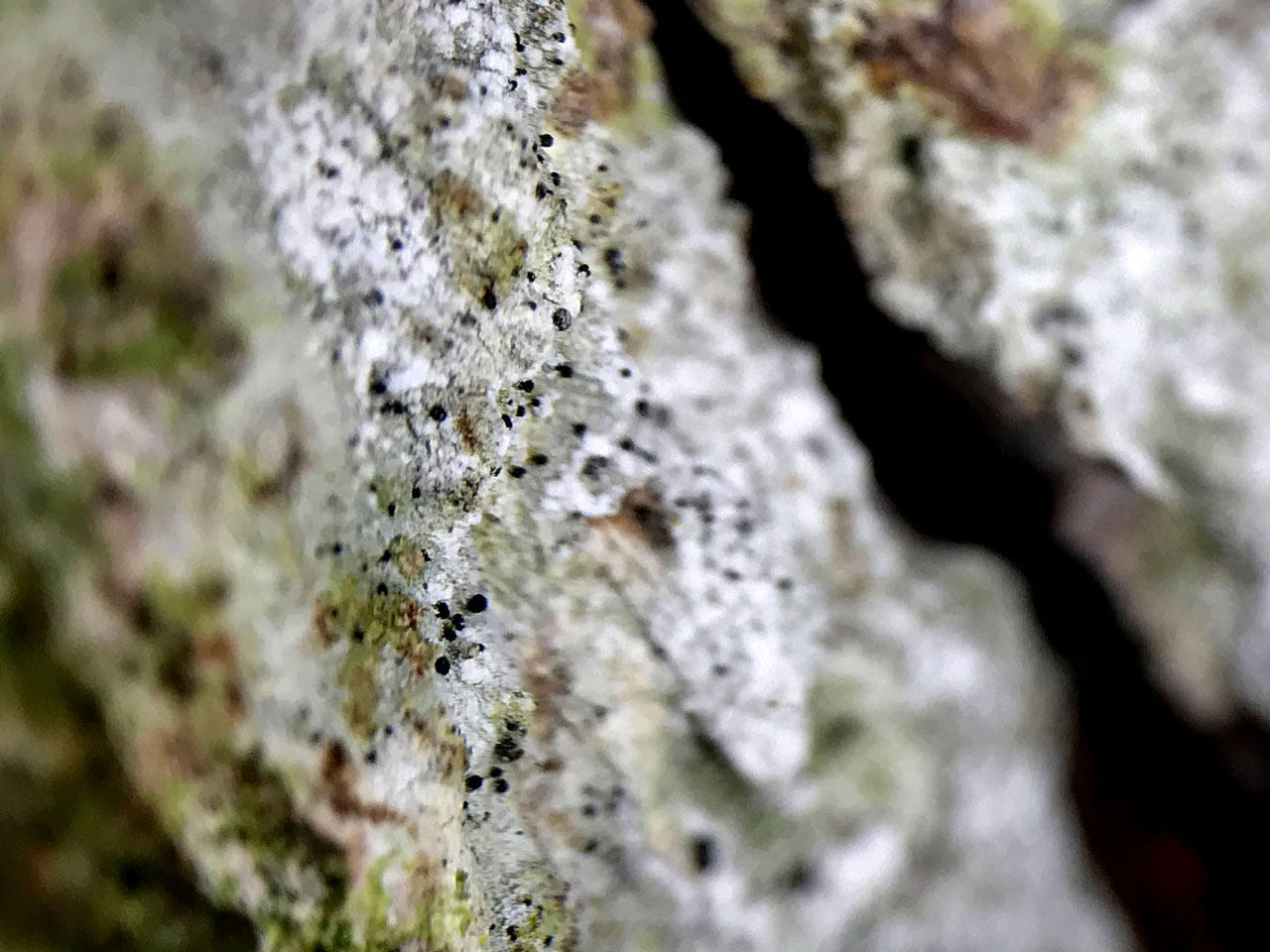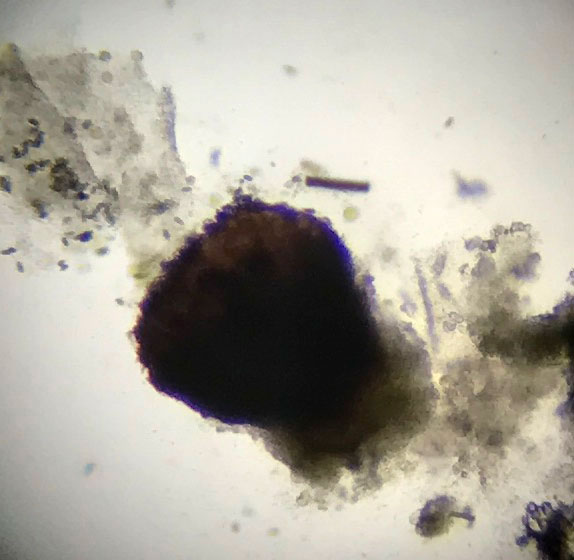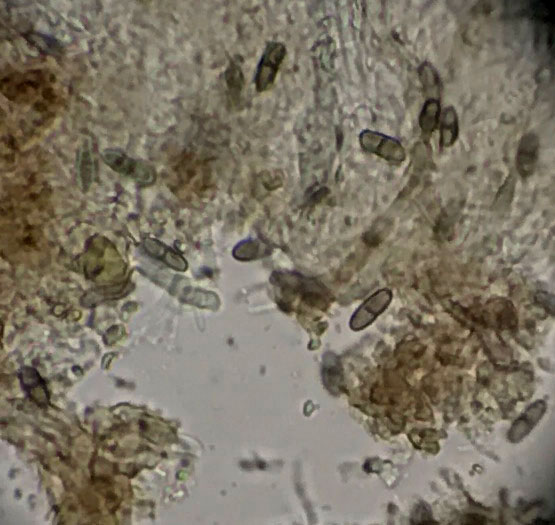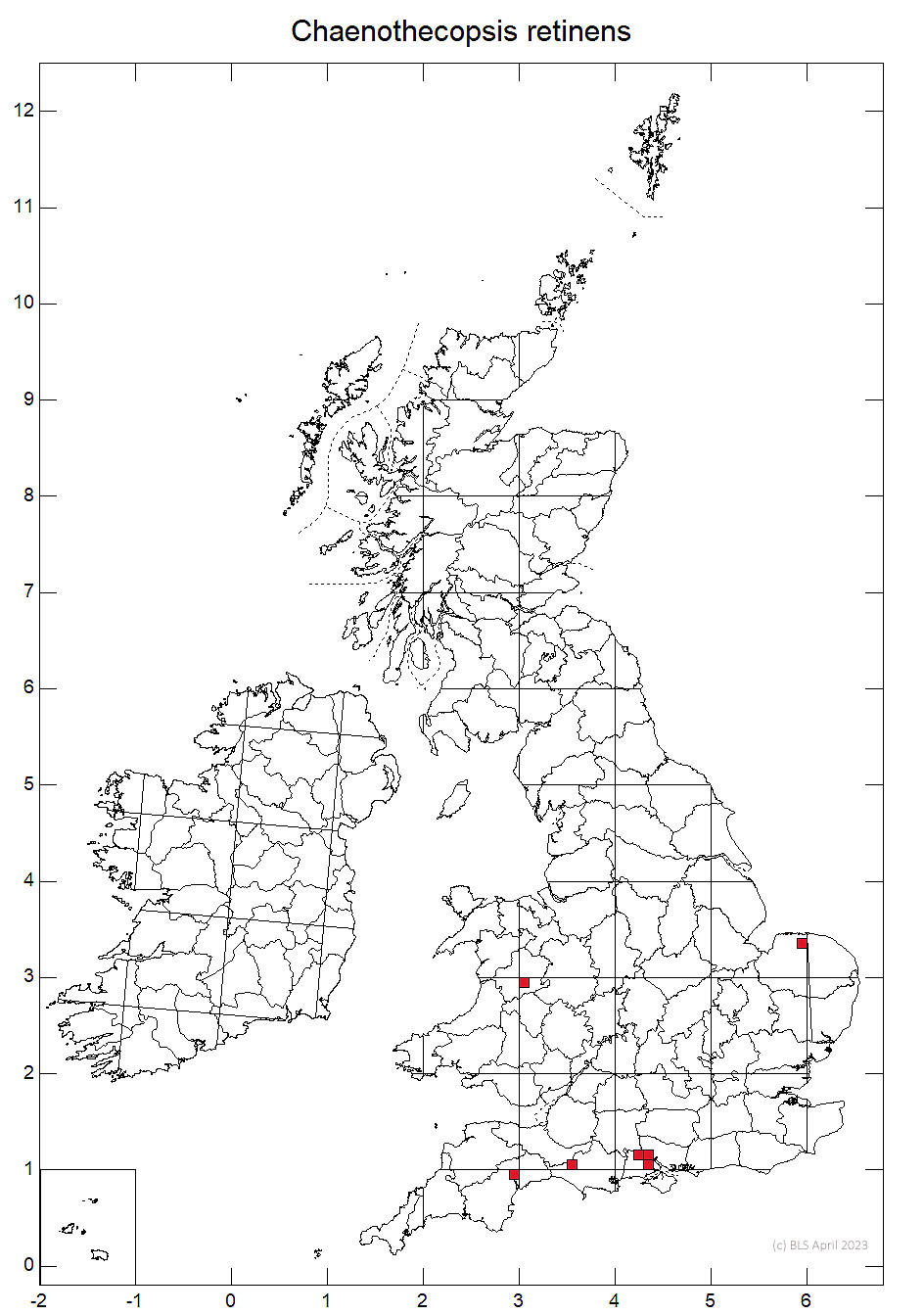A tiny pinhead only found as an obligate parasite of Sporodophoron cretaceum on old Oaks in the south. The apothecia has a short stalk so it is normally seen as round black apothecia heads just emerging out of the host's thallus. The combination of the short stalks, the host and the brown and one septate spores is distinctive. It appears very rare both here and internationally.
Apothecia 0.1–0.25 mm tall, solitary, black; head 0.12–0.20 mm diam.; stalk 0.08–0.11 mm tall, immersed in the host thallus; exciple dark yellowish red, epithecium reddish brown, stalk in section red; all parts K–, N–. Ascospores 7–11 × 2.3–3.5 µm, 1-septate, brown, minutely warted, septum of similar thickness as the spore wall.
Characterised by very short stalks that are almost completely immersed in the host thallus, the reddish brown epithecium, exciple and stalk and rather large, 1-septate ascospores. Known also from Inoderma byssaceum in Sweden and central Europe.
On thalli of Sporodophoron cretaceum on old Oaks.

Rare. S. England (Devon, Dorset, Somerset, Hampshire, Norfolk), Wales (Montgomery), Channel Is (Jersey).
Not assessed in the Red List in 2012, but was added to the Notable list in the mean time. This species is found very rarely, even when its host is target searched extensively as in the New Forest, Hampshire, and it appears to have very low occupation rate on the host. Revisits also suggests the infections are relatively short lived. The host is widespread but confined to veteran trees but only has large populations in old growth pasture woodlands and in old parks, which is where Chaenothecopsis retinens has been found. Likely to be added to the Red List at a high level of threat. It is also a very rare species in Europe and not recorded beyond, so the known British population is likely to be an international responsibility.
Britain: Notable and a probable International Responsibility species
Sanderson, A., Cannon, P., Coppins, B., & Simkin, J. (2025). Mycocaliciales: Sphinctrinaceae, including Chaenothecopsis, Mycocalicium, Phaeocalicium, Sphinctrina and Stenocybe. Revisions of British and Irish Lichens 52: 1–15.
Text by Neil A Sanderson based on Sanderson et al (2025)



